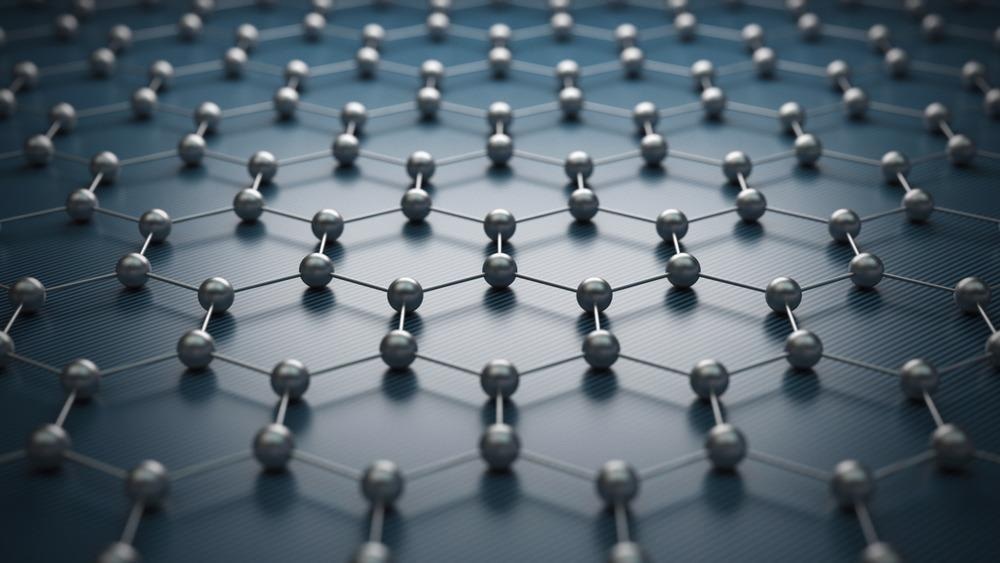
Image Credit: koya979/Shutterstock.com
Additive manufacturing has been a revelation for many industries. It gives designers and engineers the ability to produce complex shapes and customized items on demand in a more sustainable and less wasteful manufacturing process.
The process involves printing an item layer by layer, using a feedstock such as plastic or metals like titanium, steel, and aluminum. However, not all metals are suitable. For example, pure copper is challenging due to its high reflectivity.
Researchers from Uppsala University in Sweden believe they have overcome this problem by lowering the malleable and ductile metal reflectivity using the patented graphene technology of Graphmatech. This Swedish company develops next-generation materials tailor-made with graphene.
The Problem with Copper
Copper has exceptional electrical and thermal conductivity, making it ideal for heat exchangers, induction coils, electronics, and even rocket engine parts. Unfortunately, these properties also make it difficult to process for use in additive manufacturing.
Powder bed fusion is the leading technology in metal additive manufacturing. It uses standard lasers to fuse powdered metals into three-dimensional objects. However, copper is extremely reflective in precisely the same range of wavelengths as these lasers. Consequently, only a small part of the laser’s energy is absorbed by the copper, resulting in low-density printed parts.
The equipment used in the process could be adapted – at great effort and expense – but it often does not deliver enough energy to the material to reform it into denser components. Alternatively, less conductive copper alloys could be used, but this is not always ideal.
Graphene Comes to the Rescue
In collaboration with graphene materials company Graphmatech, the Swedish researchers have shown that it is possible to improve copper powders' processability while also enhancing the resulting printed parts' properties. They have lowered the reflectivity of copper powder and improved its printability for laser additive manufacturing, resulting in more densely printed parts.
“By modifying the surface of the copper powder using Graphmatech’s patented graphene technology, we successfully reduced the reflectance by up to 67%,” says Dr Mamoun Taher, CEO of Graphmatech.
The researchers used Graphmatech’s Aros Graphene, a unique hybrid material that keeps graphene flakes separate while they are distributed into other materials, allowing it to retain many of the graphene’s useful properties.
Copper powder was coated in the graphene, which is eco-friendly, cost-effective, and scalable. The graphene survived the printing process, positively affecting the printed copper-graphene parts' density, and significantly decreased their porosity.
“The new process developed to coat metal powder with graphene opens up very interesting perspectives for the design of new materials in various applications,” notes Professor Ulf Jansson, whose research group at Ångström Laboratory is tackling this groundbreaking work.
“This 3D printable hybrid material has the potential to add value in a range of sectors such as e-mobility, electronics and defense,” adds Dr Taher.
Graphmatech, who has already made notable advances in other graphene-metal composites and coated powders for additive manufacturing, are now actively scaling up this technology. The company’s graphene technology developments aim to help transform the way we work, travel and live.
Copper’s Future in Additive Manufacturing
Technological improvements such as this are crucial for copper additive manufacturing processes and materials. There is a quickly growing potential for additive manufacturing using copper and copper alloys. The market is expected to expand by 43% CAGR by 2029, with shipments of the metal for this purpose reaching over 1.4 million kilograms during the same period.
Powder bed fusion and metal-bound printing will likely benefit from increased copper printing, but other areas will also profit. In addition to defense and e-mobility, there is also the potential for the use of this technology in electronics and medical devices.
References and Further Reading
Graphmatech (2021) Graphmatech’s graphene technology unlocks the potential of copper additive manufacturing, Graphmatech.com, https://www.graphmatech.com/graphmatechs-graphene-technology-unlocks-the-potential-of-copper-additive-manufacturing/. Accessed 11 Match 2021.
eos, Copper Alloys for Additive Manufacturing, eos [online] https://www.eos.info/en. Accessed 11 March 2021.
Heraeus Group, Copper alloys – powder for additive manufacturing, Heraeus Group [online] https://www.heraeus.com/en/group/home/home.html. Accessed 11 March 2021.
SmarTech Markets Publishing (2020), Over 1.4 Million Kg of Copper Powders for Additive Manufacturing Expected to Ship by 2029, GlobeNewswire [online] https://www.globenewswire.com/news-release/2020/05/19/2035707/0/en/Over-1-4-Million-Kg-of-Copper-Powders-for-Additive-Manufacturing-Expected-to-Ship-by-2029.html. Accessed 11 March 2021.
Disclaimer: The views expressed here are those of the author expressed in their private capacity and do not necessarily represent the views of AZoM.com Limited T/A AZoNetwork the owner and operator of this website. This disclaimer forms part of the Terms and conditions of use of this website.